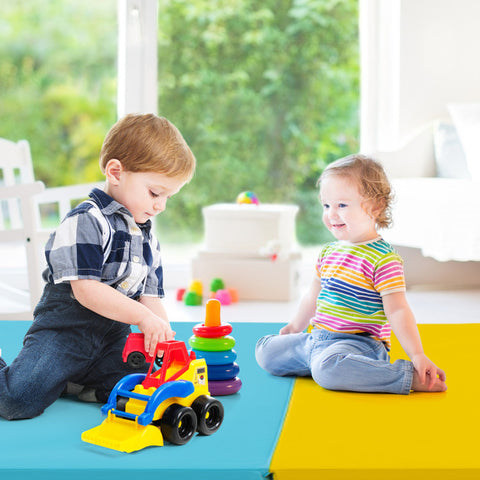News
Understanding the Importance of Seam Strength in Gymnastics Mats
When evaluating the quality and durability of gymnastics mats, one often-overlooked factor is seam strength. While most buyers focus on thickness, surface texture, or foam density, the construction and integrity of the seams are critical for long-term use, safety, and overall mat performance.

What Is Seam Strength and Why Does It Matter?
Seam strength refers to the durability and resistance of the stitched or bonded areas where two mat panels meet or fold. These seams endure constant stress from jumps, rolls, and mat folding. Weak seams can tear or split over time, leading to exposed foam, uneven surfaces, or even potential injury.
In gymnastics settings—whether at home, in schools, or in professional gyms—mats are regularly moved, folded, and subjected to high-impact landings. Without reinforced seams, even a high-quality foam mat can quickly become unusable.
Types of Seams Used in Gymnastics Mats
-
Double-Stitched Seams: Provide extra durability. Often used in high-traffic or commercial gym mats, they reduce the chance of tearing even under repetitive impact.
-
Heat-Sealed Seams: Common in inflatable mats, heat-sealing creates a waterproof and airtight bond. This technique is crucial for air tracks and water-resistant models.
-
Reinforced Taped Seams: Taped seams add another layer of strength by securing the stitched area with industrial tape, preventing fraying and foam exposure.
Signs of Weak or Failing Seams
-
Visible splitting or fraying where panels meet
-
Foam bulging out from the sides
-
Stitching that is unraveling or loose
-
Soft or weak spots along the foldable joint areas
-
Mat losing its structural shape or becoming uneven
How to Choose Mats with Strong Seams
-
Check for Double Stitching: Especially for folding mats or crash pads.
-
Inspect the Material: Vinyl-coated polyester covers with strong seams are more resistant to tears.
-
Look for Manufacturer Warranties: Reliable manufacturers often guarantee seam integrity.
-
Read User Reviews: Reviews often mention long-term durability and performance under frequent use.
Tips to Extend Seam Life
-
Avoid dragging mats across rough surfaces
-
Fold mats carefully and store in dry, cool environments
-
Clean mats regularly to prevent debris buildup along seams
-
Avoid placing sharp equipment or shoes on the mat
Best Use Cases Where Seam Strength Is Crucial
-
Preschools and training centers with high turnover of beginners
-
Home setups where mats are folded and stored frequently
-
Tumbling passes or routines with dynamic floor work
-
Inflatable mats where seam failure could lead to air leaks
Final Thoughts
Seam strength may seem like a small detail, but it has a big impact on the safety, lifespan, and performance of your gymnastics mats. Whether you're a coach, parent, or gymnast, understanding and prioritizing seam quality can help you choose mats that are reliable, durable, and worth the investment.

